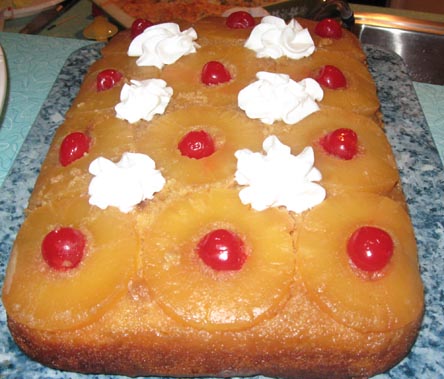
The Kitchen Project | History Project | Contact Us | About Us | Free Food History Course
|
The History of Pineapple Its origin They imported the fruit and cultivated it in hot houses. Members of European royal families soon developed a liking for it. It gradually became available to the rich, the noble and the elite. Origin of the Word More interesting facts about Pineapple Recipes and Facts about Pineapple More Facts about the Pineapple The natural (or most common) pollinator of the pineapple is the hummingbird. Pollination is required for seed formation; the presence of seeds negatively affects the quality of the fruit. In Hawaii, where pineapple is cultivated on an agricultural scale, importation of hummingbirds is prohibited for this reason. [edit] Wild pineapples Early settlements in America, a pineapple was traditionally given as a gift of friendship. It takes a long time for a pineapple plant to produce fruit, normally two years. In most of the world the fruit is known by the name. Ananas, Southeast Asia now produces the majority of the world’s pineapples.. James Dole is considered the “King of Pineapples.” You can grow your own pineapple by planting the top of the pineapple in soil. Pulling leaves from a pineapple is not an indication of ripeness as many people think. Del Monte stopped producing pineapples in Hawaii in 2006. Henry Ginaca invented the first pineapple peeling and coring machine in 1911. Before this, pineapples were peeled and cored by hand. Ginaca’s machine cored and peeled 35 pineapples a minute. Every pineapple plant produces one pineapple each year. A pineapple is considered to be a cluster of 100-300 little fruitlets. You can’t use pineapple in jello because its bromelain content stops it from jelling. A pineapple cannot ripen more after it is picked. An unripe pineapple not only tastes awful, it can be poisonous. One of the ways you tell if a pineapple is ripe is by smelling it. Among pineapple facts is one that indicates Thailand produces more pineapples than any other country in the world. After Columbus first found pineapples, they started to be used on ships to prevent scurvy. In Hawaii, the word for pineapple is “Hala kahiki.” 212,000 tons of pineapple were produced in Hawaii in 2005. The bromelain in pineapple is used as a meat tenderizer. The fruit, peel, and juice of pineapples is said to remove warts. The core of the pineapple is edible. It was a rite of passage in the Caribbean for young men to run through the pineapple plantings, and bear the pain from the prickly leaves without revealing it. A pineapple can be ripe even if the outside is green. Eating pineapple is believed to induce uterine contractions during pregnancy. The pineapple pulp left after juicing is used in livestock feed. It is very high in vitamin A. Do not mix dairy products with pineapple until right before serving.
A painting by Hendrik Danckerts from 1675 showing Charles II being given the first pineapple grown in England by his royal gardener, John Rose. Source: Wikimedia Commons
|
More Links and Recipes
|
|||||||
|
||||||||


